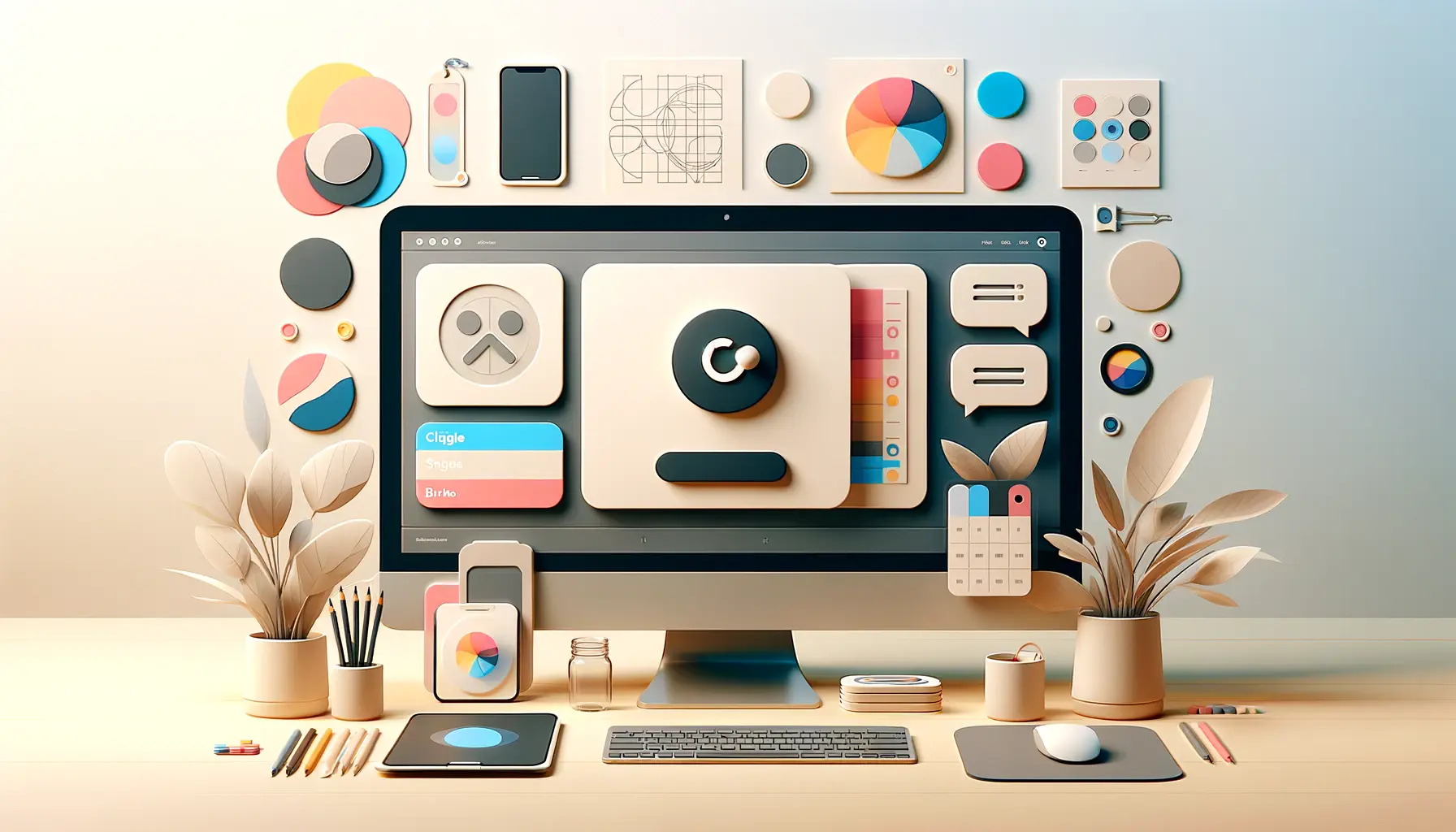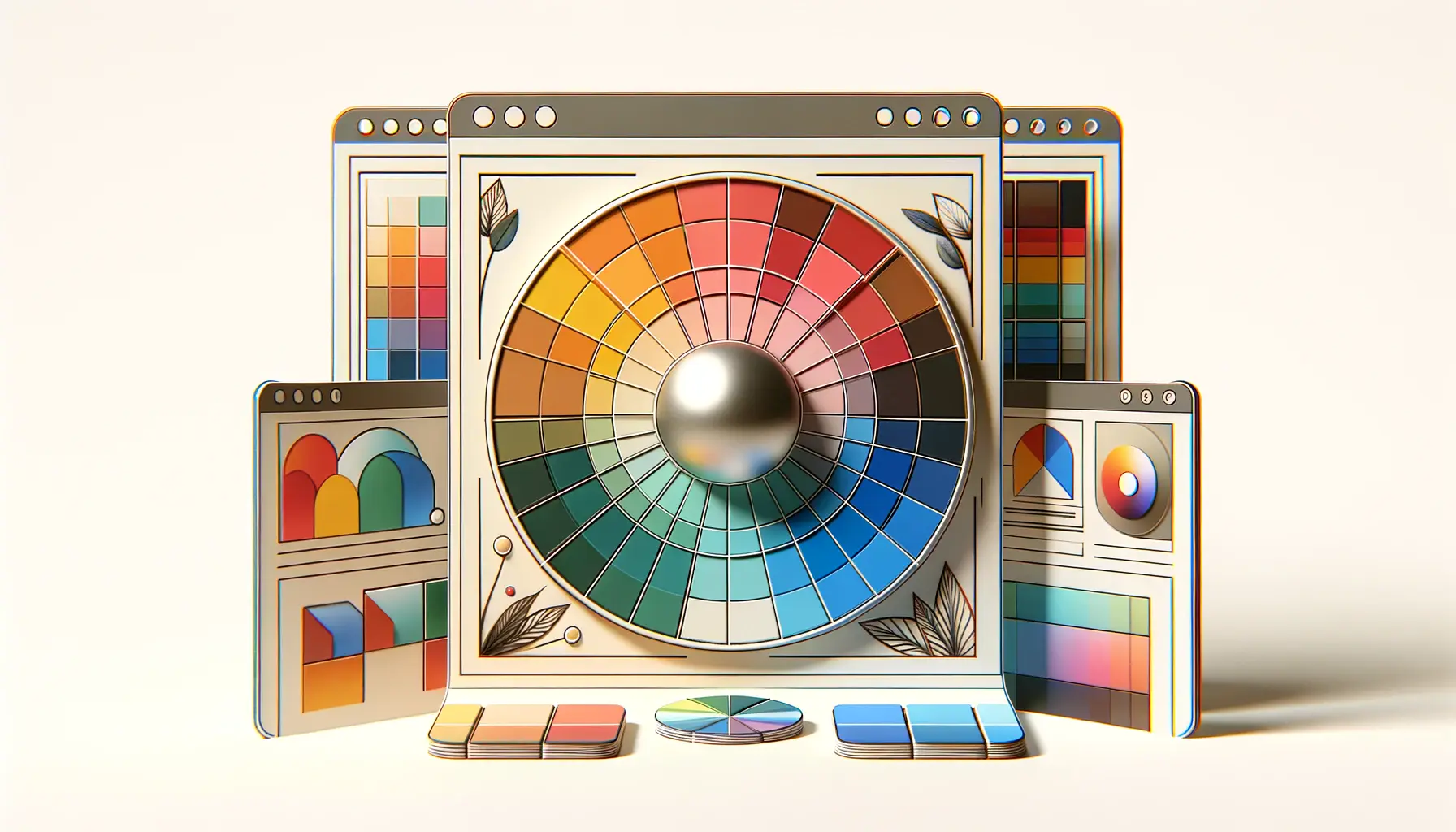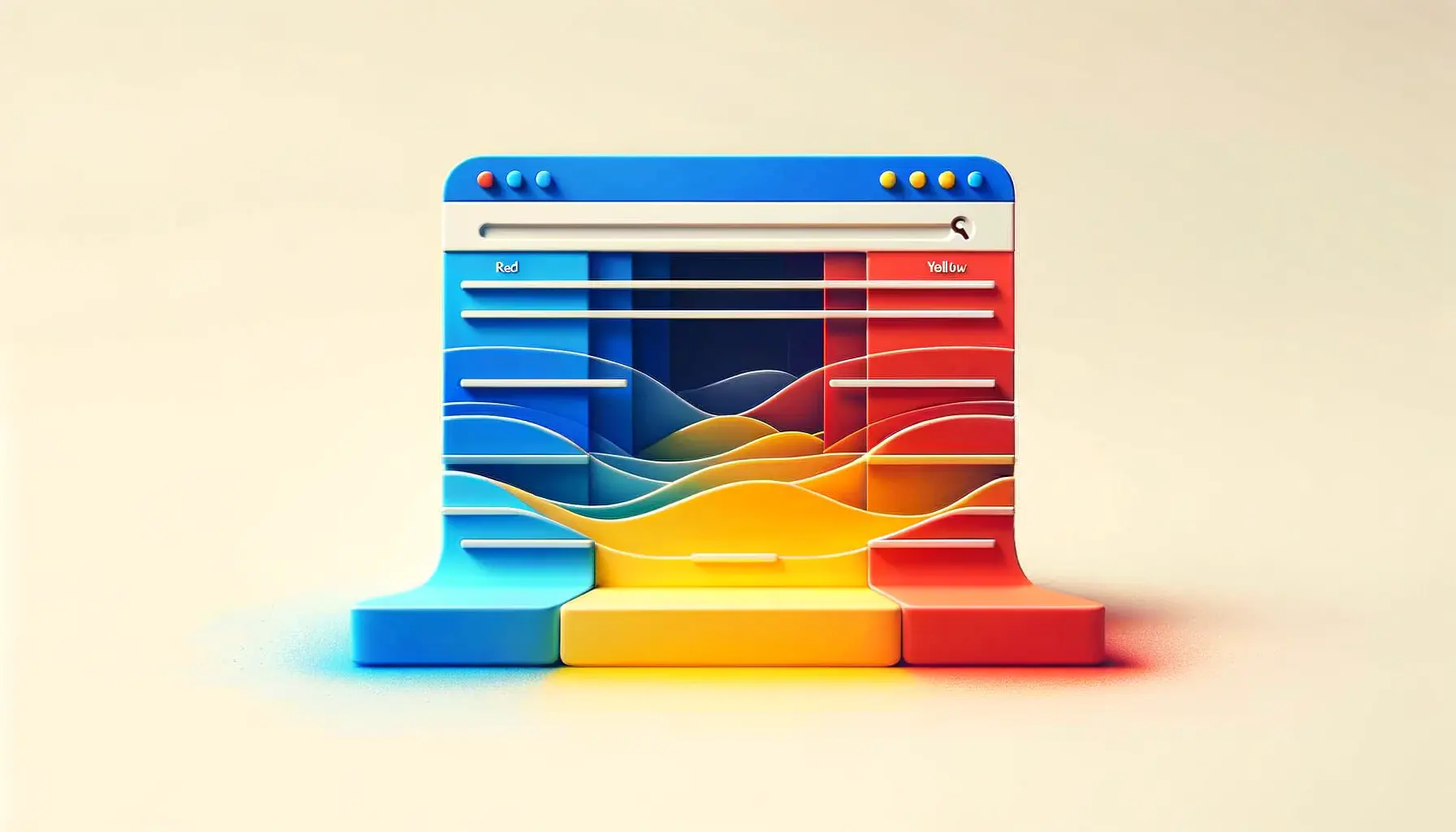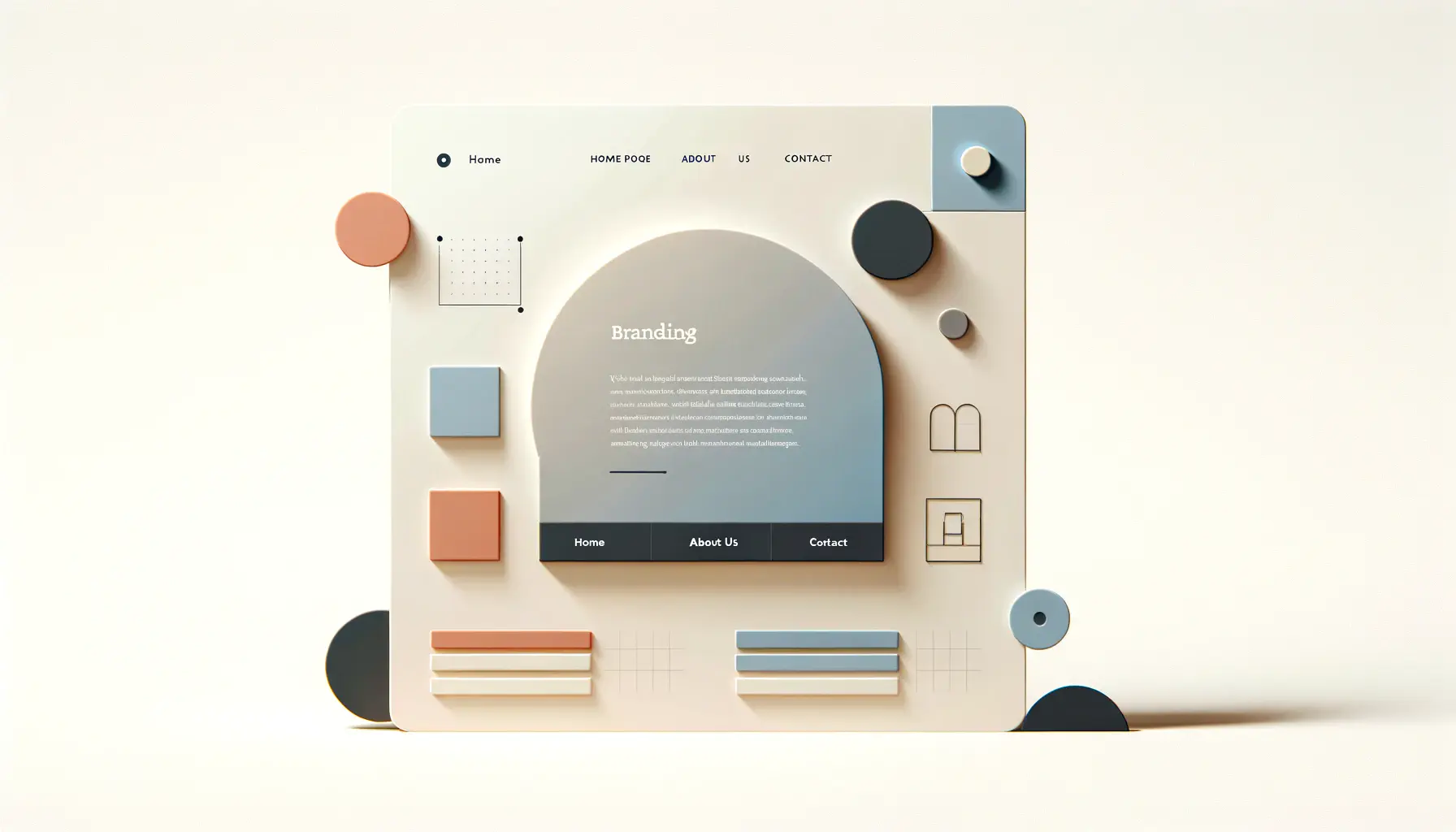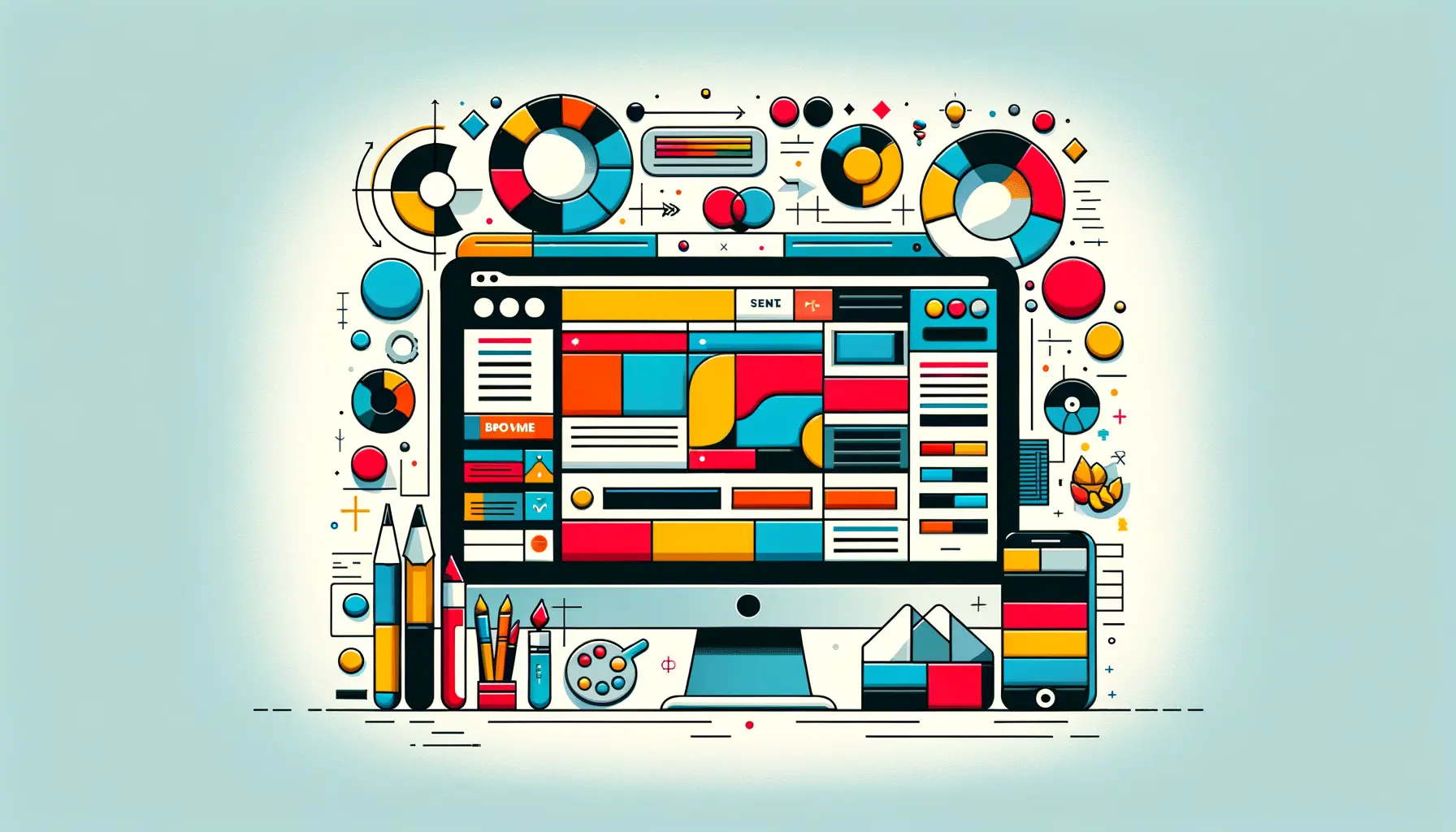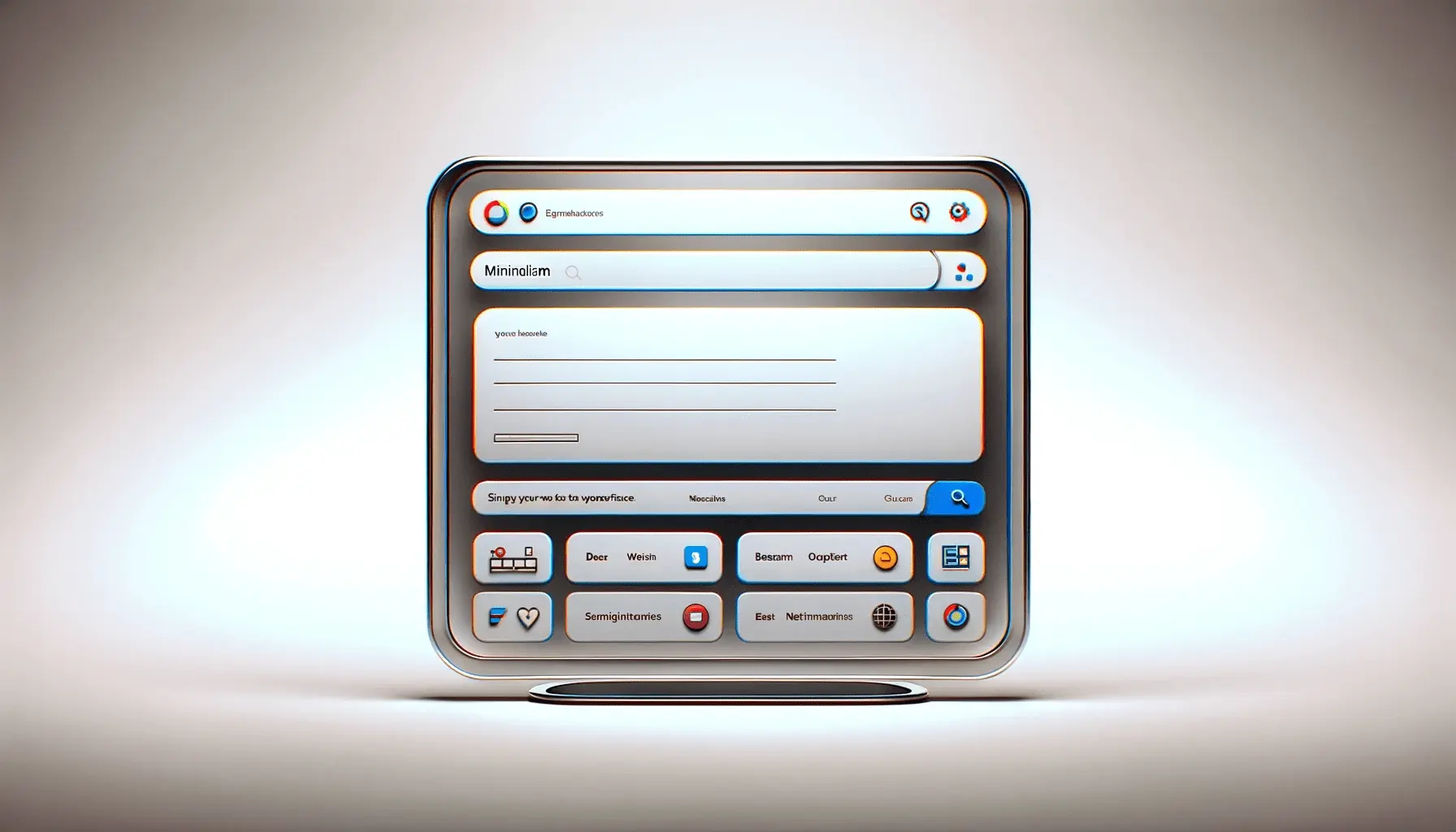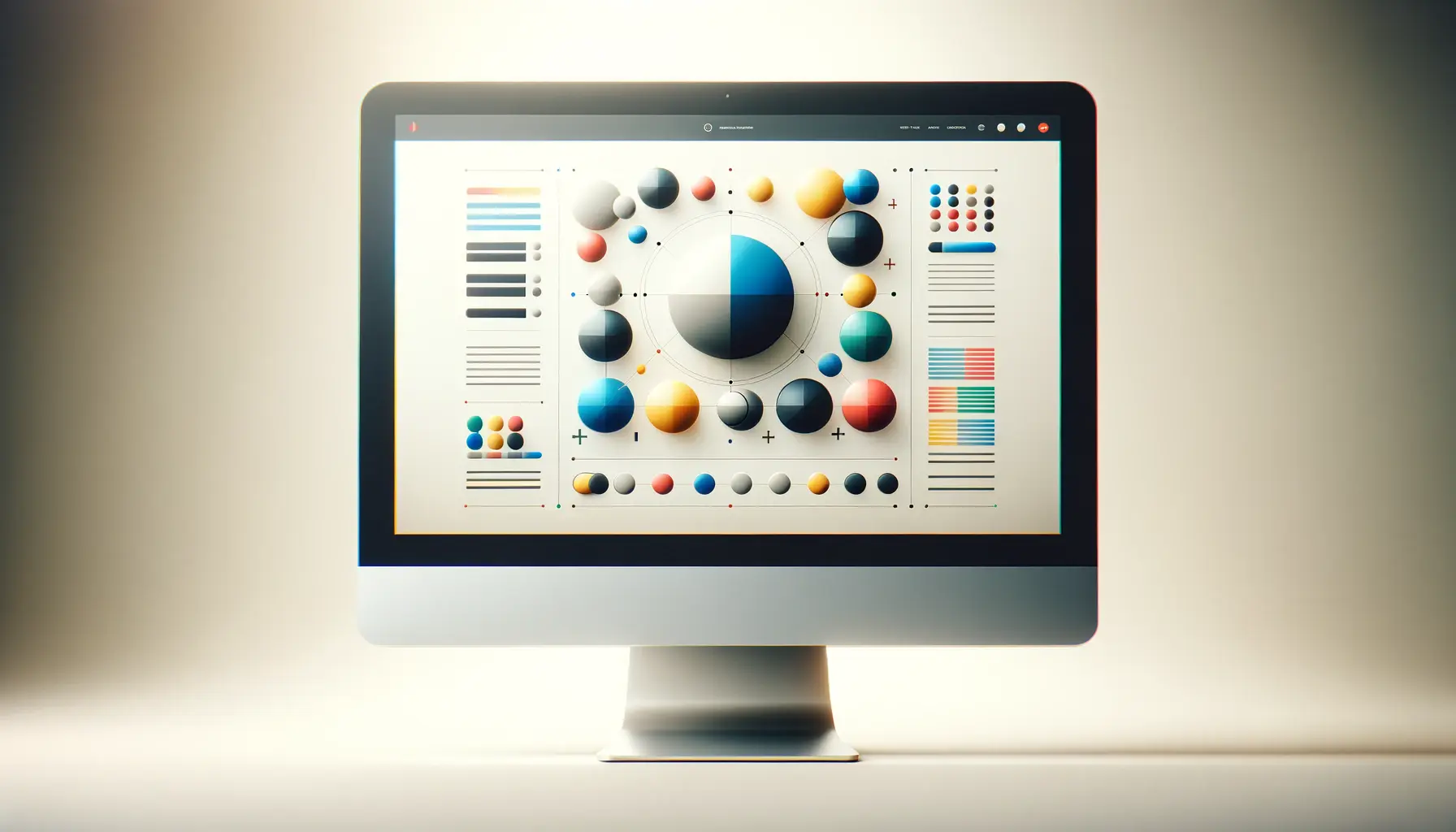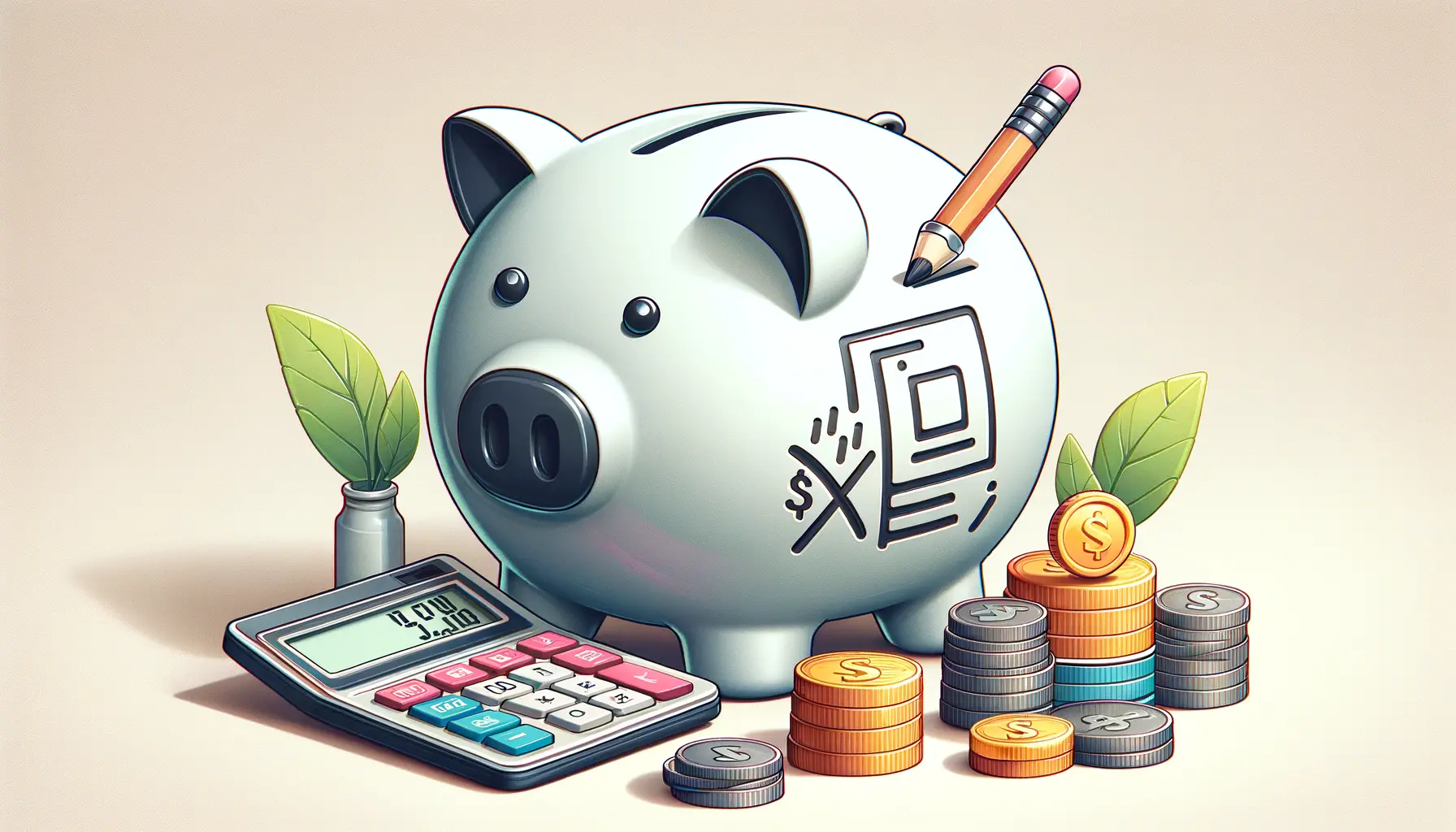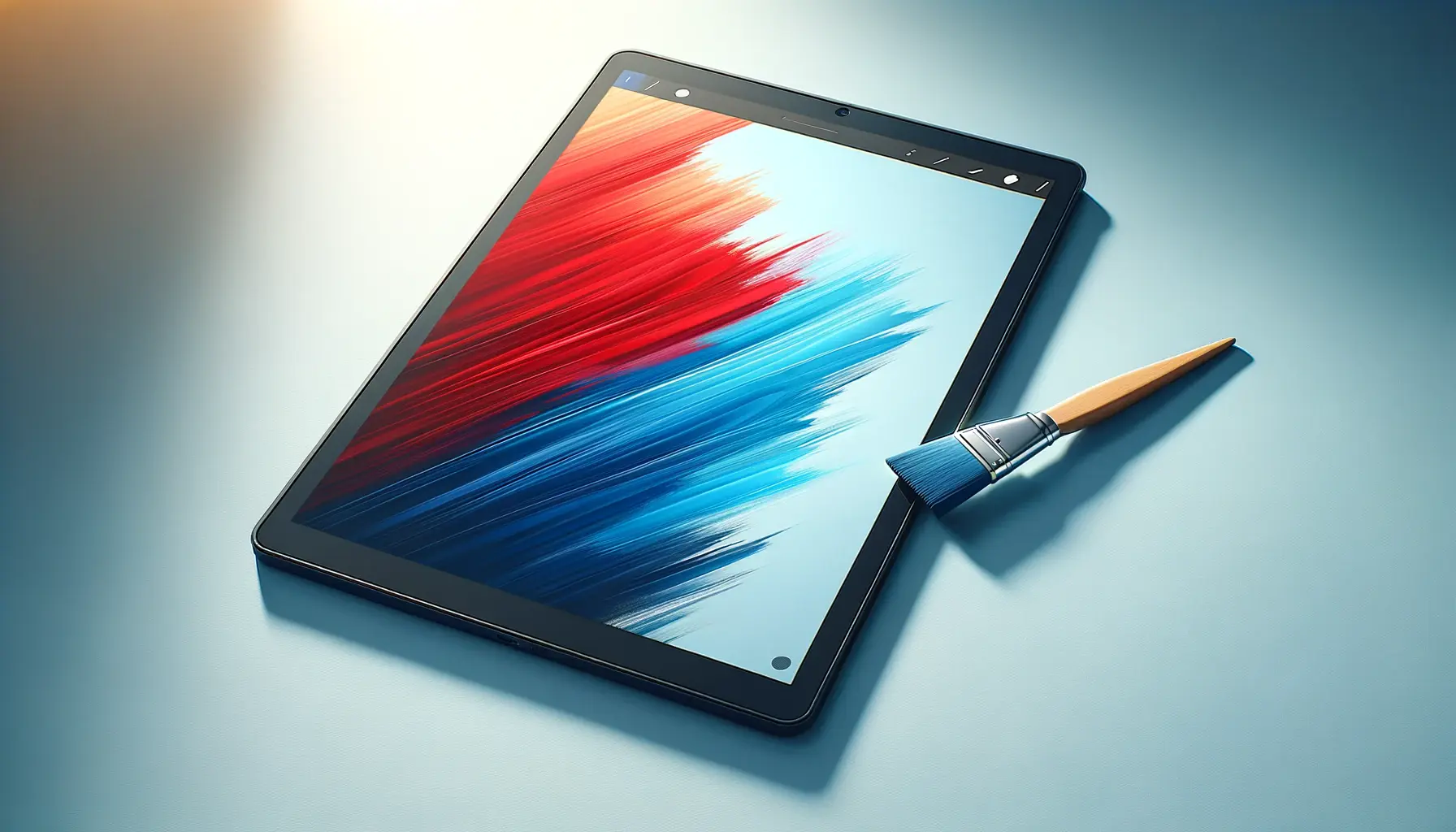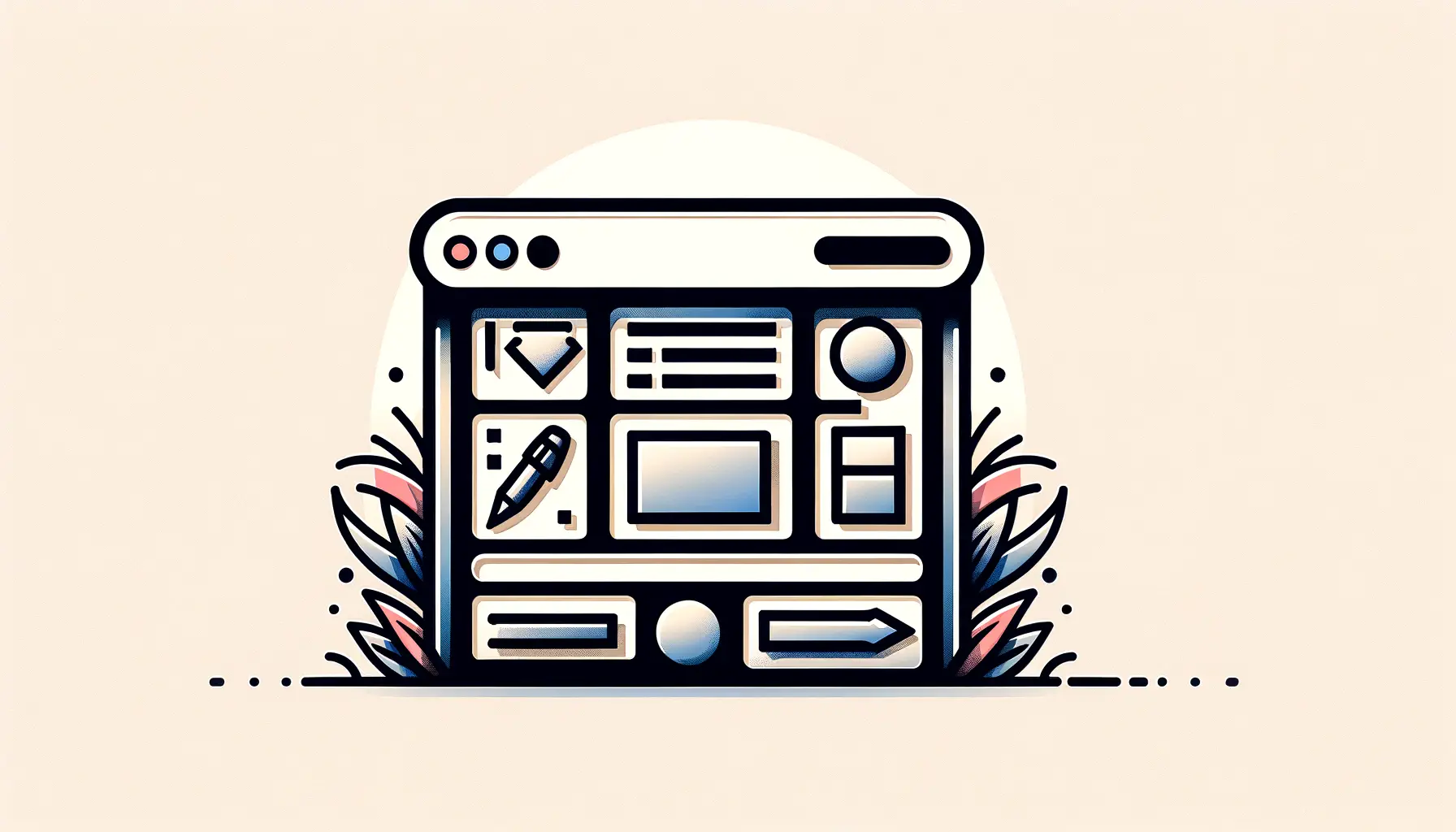The digital landscape is evolving rapidly, and at the heart of this transformation is the user experience (UX), a pivotal element that bridges the gap between users and technology.
In the realm of branding and web design, UX emerges not just as a design principle but as a comprehensive strategy to engage, satisfy, and retain customers.
The essence of UX in branding and web design lies in its ability to create a seamless, intuitive, and enjoyable interaction between the user and the digital platform.
Today, businesses recognize that a strong online presence goes beyond mere aesthetics.
It’s about crafting an experience that resonates with the user’s needs, preferences, and emotions.
This alignment between user expectations and the digital interface defines the success of a brand in the digital domain.
As we delve deeper into the significance of UX in branding and web design, it becomes clear that understanding and implementing effective UX strategies are crucial for businesses aiming to establish a robust digital identity.
- The Role of UX in Brand Identity
- UX Strategies for Effective Web Design
- Integrating Emotional Design in UX
- Accessibility and Inclusivity in UX Design
- Mobile-First Design and Its Impact on UX
- Optimizing User Experience with Data Analytics
- Future Trends in UX Design
- UX Design and Sustainability
- Embracing the Future of User Experience in Branding and Web Design
- User Experience in Branding and Web Design FAQs
The Role of UX in Brand Identity
Creating a Lasting First Impression
The initial interaction a user has with a website can significantly influence their perception of the brand.
A well-designed UX ensures that this first impression is positive, setting the stage for a lasting relationship between the user and the brand.
By focusing on user-centric design principles, brands can convey their values, ethos, and personality effectively, making a memorable impact on the audience.
A positive first impression is crucial in establishing trust and credibility with the audience.
Enhancing Brand Consistency
Consistency in design, messaging, and user interaction across all digital platforms reinforces brand identity and fosters user trust.
UX plays a vital role in ensuring that every touchpoint reflects the brand’s core values and offers a cohesive experience.
This consistency not only strengthens the brand’s image but also enhances user satisfaction by providing a familiar and reliable digital environment.
Through strategic UX design, brands can achieve a harmonious balance between visual appeal and functional excellence, making every interaction meaningful and aligned with the brand’s objectives.
UX Strategies for Effective Web Design
Understanding User Needs and Preferences
The foundation of a successful UX strategy lies in a deep understanding of the target audience.
By researching and analyzing user behavior, preferences, and challenges, web designers can create interfaces that cater to the specific needs of the audience.
This user-centric approach not only improves usability but also elevates the overall user experience, encouraging engagement and loyalty.
Employing user personas, journey maps, and usability testing are some of the techniques used to gain insights into the user’s world, enabling designers to craft experiences that resonate on a personal level.
Optimizing Navigation and Usability
Efficient navigation and usability are key components of UX that directly affect a user’s ability to find information and complete tasks.
A well-structured website with intuitive navigation and clear calls-to-action (CTAs) guides users effortlessly through their journey, reducing frustration and increasing satisfaction.
This ease of use not only enhances the user experience but also contributes to a positive perception of the brand.
By prioritizing simplicity, clarity, and accessibility in web design, brands can ensure that their digital platforms are welcoming and user-friendly, catering to a wide range of users with varying levels of digital literacy.
Integrating Emotional Design in UX
Emotional design in UX focuses on creating products that elicit positive feelings in users, thereby enhancing their overall experience and connection with the brand.
By tapping into the emotional aspect, web designers can craft experiences that not only meet the functional needs of users but also resonate with them on a deeper, more personal level.
This approach to design emphasizes the importance of understanding the psychological and emotional makeup of the target audience, enabling brands to forge stronger bonds with their customers.
Key Components of Emotional Design
- Visual Aesthetics: The visual appeal of a website can significantly impact a user’s emotional response. Using colors, images, and typography strategically can evoke specific emotions, making the experience more engaging and memorable.
- Interactive Elements: Interactive elements like animations, transitions, and micro-interactions can add a layer of delight and surprise, making the user’s journey enjoyable and entertaining.
- Personalization: Tailoring the user experience to meet individual preferences and needs can make users feel valued and understood, enhancing their emotional connection with the brand.
Incorporating emotional design into UX requires a delicate balance between functionality and aesthetics, ensuring that the website not only looks appealing but also feels welcoming and intuitive.
Benefits of Emotional Design in UX
- Increased User Engagement: An emotionally engaging design can captivate users, encouraging them to explore more and stay longer on the website.
- Enhanced Brand Perception: Websites that evoke positive emotions are more likely to be perceived favorably, contributing to a strong and positive brand image.
- Improved Conversion Rates: By creating an emotional connection with users, brands can motivate them to take desired actions, such as making a purchase or signing up for a newsletter, thereby boosting conversion rates.
Emotional design is not just about making a website look attractive; it’s about creating a holistic experience that appeals to the user’s heart and mind.
By prioritizing emotional design in UX, brands can differentiate themselves in a crowded digital space and build lasting relationships with their audience.
Accessibility and Inclusivity in UX Design
Accessibility and inclusivity are critical components of user experience design that ensure digital products are usable and enjoyable for everyone, including people with disabilities.
By adopting accessible and inclusive design practices, brands demonstrate their commitment to social responsibility and widen their reach to a more diverse audience.
This approach not only enhances the user experience for individuals with disabilities but also improves usability for all users, reflecting positively on the brand’s image and values.
Principles of Accessible Web Design
- Perceivable Information: Providing text alternatives for non-text content, creating content that can be presented in different ways without losing information, and making it easier for users to see and hear content.
- Operable Interfaces: Ensuring all functionalities are available from a keyboard, giving users enough time to read and use content, and designing navigation in a way that helps users find content and determine where they are.
- Understandable Information and User Interface: Making text readable and understandable, making web pages appear and operate in predictable ways, and helping users avoid and correct mistakes.
- Robust Content: Maximizing compatibility with current and future user tools, ensuring content can be interpreted reliably by a wide variety of user agents, including assistive technologies.
Incorporating accessibility and inclusivity from the outset of the design process not only complies with legal requirements but also aligns with ethical design practices, fostering a more inclusive digital world.
Enhancing UX Through Inclusivity
Creating an inclusive user experience goes beyond addressing physical disabilities.
It involves considering a wide range of human diversity, including age, gender, ethnicity, language, and cultural background.
By understanding and accommodating the diverse needs and preferences of all users, brands can create more meaningful and personalized experiences that resonate with a broader audience.
- Cultural Sensitivity: Being mindful of cultural nuances and incorporating culturally relevant content can make users from different backgrounds feel seen and respected.
- Language Inclusivity: Offering content in multiple languages and using clear, jargon-free language makes the website accessible to non-native speakers and those with varying levels of literacy.
- Age Consideration: Designing for different age groups, especially older adults, by considering font sizes, button sizes, and interaction simplicity can significantly improve usability.
By prioritizing accessibility and inclusivity, brands not only enhance the user experience for everyone but also demonstrate social responsibility and empathy, key qualities that attract and retain loyal customers in today’s competitive digital landscape.
Mobile-First Design and Its Impact on UX
In the era of smartphones, the mobile-first design approach has become a cornerstone of effective UX strategy.
This methodology, which involves designing for the smallest screen before scaling up to larger screens, prioritizes the mobile experience to meet the growing demand for on-the-go access.
The impact of mobile-first design on UX is profound, as it ensures that all users, regardless of device preference, enjoy a seamless and engaging experience.
Adopting a mobile-first design not only caters to the majority of internet users who access the web via mobile devices but also aligns with search engines’ preferences, notably Google’s mobile-first indexing.
This approach underscores the importance of mobile usability in achieving higher search rankings, driving traffic, and enhancing user engagement.
Benefits of Mobile-First Design
- Enhanced User Engagement: Mobile-first websites are optimized for touch interactions and smaller screens, offering a more intuitive and satisfying browsing experience for mobile users.
- Improved Load Times: Designing for mobile devices encourages a minimalist approach, leading to faster loading times and reduced bounce rates.
- Better SEO Performance: Since mobile-friendliness is a ranking factor for search engines, mobile-first designs contribute to better visibility and higher search rankings.
While mobile-first design focuses on optimizing for mobile devices, it does not neglect desktop users.
Instead, it ensures a cohesive experience across all devices, enhancing the overall UX.
Implementing Mobile-First Design
Implementing a mobile-first design requires a shift in mindset, starting with the recognition that mobile user needs may differ from those of desktop users.
It involves prioritizing content and functionalities that are most important for mobile users and ensuring that navigation is streamlined and efficient.
- Content Hierarchy: Establishing a clear content hierarchy ensures that the most critical information is presented first, making it easily accessible on smaller screens.
- Touch-Friendly Interfaces: Designing with touch interactions in mind, including larger touch targets and gesture-based navigation, enhances usability on mobile devices.
- Responsive and Adaptive Design: Employing responsive or adaptive design techniques allows the website to adjust smoothly to various screen sizes and orientations, providing an optimal viewing experience for every user.
The mobile-first approach to web design is not just a trend but a reflection of the evolving user behavior and technology landscape.
By embracing mobile-first design, brands can ensure that their digital presence is robust, user-friendly, and aligned with the needs of the modern consumer.
Optimizing User Experience with Data Analytics
In the quest to refine and perfect user experience, data analytics emerges as a powerful tool, offering insights that drive informed decision-making.
By analyzing user behavior, preferences, and interactions, brands can uncover valuable information that informs UX design strategies.
This data-driven approach enables a more personalized, efficient, and engaging user experience, ultimately leading to increased satisfaction and loyalty.
Utilizing data analytics in UX design not only helps identify areas for improvement but also predicts future user trends, allowing brands to stay ahead in the competitive digital landscape.
The integration of analytics into the UX process transforms subjective design decisions into objective, evidence-based actions.
Key Metrics for UX Optimization
- User Engagement: Metrics such as time on site, page views per session, and interaction rates provide insights into how users engage with the website.
- Conversion Rates: Analyzing conversion rates helps identify the effectiveness of design elements in motivating users to take desired actions.
- User Feedback: Collecting and analyzing user feedback through surveys, reviews, and usability tests offers direct insights into user satisfaction and areas for improvement.
Leveraging data analytics in UX design is not about collecting data for the sake of data.
It’s about interpreting this data to make meaningful improvements that enhance the user experience.
Implementing Analytics in UX Design
Implementing analytics within the UX design process involves a systematic approach to collecting, analyzing, and acting on data.
This process begins with defining clear objectives and identifying key performance indicators (KPIs) that align with user experience goals.
By continuously monitoring these metrics, brands can gain a deeper understanding of user behavior and preferences, enabling them to make data-informed design decisions.
- A/B Testing: Conducting A/B tests on different design elements allows brands to compare user responses and identify the most effective options.
- Heatmaps: Using heatmaps to visualize where users click, scroll, and focus on a page can reveal insights into user navigation and content interest.
- User Journey Analysis: Mapping user journeys through the website helps identify friction points and opportunities to streamline the experience.
By integrating data analytics into the UX design process, brands can create more user-centric websites that not only meet but exceed user expectations.
This approach ensures that every design decision is backed by solid data, leading to a more engaging, intuitive, and successful user experience.
Future Trends in UX Design
The landscape of UX design is continually evolving, shaped by technological advancements, changing user behaviors, and emerging design philosophies.
Staying abreast of future trends in UX design is crucial for brands aiming to deliver cutting-edge user experiences.
These trends not only reflect the direction in which technology and design are headed but also offer insights into how user expectations are changing.
By anticipating and integrating these trends, brands can ensure their digital offerings remain relevant, engaging, and user-friendly.
As we look to the future, several key trends stand out, promising to redefine the UX landscape.
These trends highlight the importance of adaptability, personalization, and immersive experiences in creating meaningful connections with users.
Personalization and AI
- AI-Driven Experiences: Artificial intelligence (AI) and machine learning are becoming integral to creating personalized user experiences. By analyzing user data, AI can tailor content, recommendations, and interactions to individual preferences, enhancing the relevance and engagement of digital platforms.
- Adaptive Interfaces: AI technologies enable the development of adaptive interfaces that adjust to user behaviors and contexts, offering a more intuitive and efficient user experience.
Immersive Technologies
- Augmented Reality (AR) and Virtual Reality (VR): AR and VR technologies are transforming UX design by offering immersive and interactive experiences. These technologies allow users to explore digital environments in more engaging and lifelike ways, opening up new possibilities for brand interaction and storytelling.
- Voice User Interfaces (VUIs): The rise of voice assistants and smart speakers is driving the adoption of VUIs, making voice interaction an essential component of the UX design toolkit. Designing for voice requires a focus on natural language processing and conversational interfaces, offering users a hands-free and accessible way to interact with digital services.
Embracing these future trends requires a forward-thinking approach to UX design, where innovation and user-centricity converge to create experiences that not only meet current user needs but also anticipate future demands.
Designing for Global Audiences
As digital platforms reach a global audience, UX design must consider the diverse needs, cultures, and languages of users worldwide.
This globalization of UX emphasizes the importance of cultural sensitivity, localization, and inclusivity in creating designs that resonate across different demographics.
By prioritizing global accessibility and relevance, brands can ensure their digital experiences are welcoming and meaningful to users everywhere.
- Localization: Tailoring content and design to specific cultural contexts and languages to ensure relevance and accessibility for users in different regions.
- Inclusive Design: Adopting inclusive design practices to accommodate the wide range of user abilities, ensuring that digital products are usable and enjoyable for everyone, regardless of their physical or cognitive abilities.
The future of UX design is rich with opportunities to innovate and elevate the user experience.
By staying informed about emerging trends and integrating them thoughtfully into their design practices, brands can create digital experiences that captivate, engage, and satisfy users in an ever-changing digital world.
UX Design and Sustainability
In an era where environmental concerns are increasingly coming to the forefront, the concept of sustainability in UX design is gaining momentum.
Sustainable UX design focuses on creating digital products that are not only user-friendly and efficient but also environmentally conscious.
This approach seeks to minimize the digital carbon footprint by optimizing design and development practices, thereby contributing to a more sustainable future.
Integrating sustainability into UX design involves considering the long-term impacts of digital products on the environment and society.
By adopting sustainable design principles, brands can demonstrate their commitment to environmental stewardship while still providing exceptional user experiences.
Principles of Sustainable UX Design
- Efficiency: Designing for efficiency reduces the amount of data transferred and processed, leading to lower energy consumption both on the server-side and for the end-user’s device.
- Longevity: Creating timeless designs and focusing on durability ensures that digital products remain useful and relevant for longer periods, reducing the need for frequent updates or replacements.
- Minimalism: A minimalist approach to design not only enhances usability but also decreases the resources required for development and maintenance, aligning with the principles of sustainability.
Assuming sustainability and UX are mutually exclusive is a misconception.
In reality, sustainable UX design can enhance user satisfaction by creating efficient, meaningful, and responsible digital experiences.
Implementing Sustainable Practices in UX Design
Implementing sustainable practices in UX design requires a holistic approach that encompasses the entire lifecycle of a digital product.
From initial concept to development, deployment, and beyond, every stage offers opportunities to incorporate sustainability.
- Green Hosting: Choosing web hosting services that use renewable energy sources or carbon offsetting can significantly reduce the environmental impact of online platforms.
- Optimized Assets: Compressing images and videos, using efficient coding practices, and minimizing the use of heavy frameworks contribute to faster loading times and reduced energy consumption.
- User Engagement: Educating users about the environmental impact of their digital behaviors and encouraging more sustainable choices can amplify the positive effects of sustainable UX design.
As digital technology continues to permeate every aspect of our lives, the role of UX design in promoting sustainability becomes increasingly important.
By embracing sustainable UX design principles, brands can lead by example, showing that it is possible to create engaging, effective digital experiences that also respect and protect our planet.
This commitment to sustainability not only benefits the environment but also strengthens brand reputation and fosters a deeper connection with environmentally conscious consumers.
Embracing the Future of User Experience in Branding and Web Design
The journey through the intricacies of user experience in branding and web design reveals a landscape rich with opportunities for innovation, engagement, and connection.
As we’ve explored, the essence of UX lies not just in creating visually appealing designs but in forging deep, meaningful interactions between users and digital platforms.
The future of branding and web design is undeniably intertwined with the principles of UX, emphasizing the need for brands to adopt a user-centric approach to remain competitive and relevant in the digital age.
The Pillars of Exceptional User Experience
At the heart of exceptional user experience are the core principles of accessibility, personalization, emotional design, and sustainability.
These pillars serve as the foundation for creating digital experiences that are not only functional and efficient but also emotionally resonant and environmentally responsible.
By prioritizing these aspects, brands can craft experiences that truly resonate with their audience, fostering loyalty and driving engagement.
Strategies for Success
- Adopting a mobile-first design approach to cater to the growing number of users accessing the web via mobile devices.
- Leveraging data analytics to inform design decisions and tailor experiences to individual user needs and preferences.
- Staying ahead of emerging trends, such as AI-driven personalization and immersive technologies, to offer cutting-edge experiences.
- Emphasizing sustainability in UX design to minimize environmental impact and appeal to eco-conscious consumers.
In conclusion, the role of user experience in branding and web design is more critical than ever.
As digital technologies continue to evolve, so too must our approaches to UX design.
By embracing the principles outlined in this article, brands can ensure that their digital presence is not only visually appealing and functional but also deeply engaging and sustainable.
The future of branding and web design is a thrilling frontier, ripe with possibilities for those willing to prioritize and innovate around user experience.
Quality web design is key for a great website! Check out our service page to partner with an expert web design agency.
User Experience in Branding and Web Design FAQs
Explore commonly asked questions about integrating user experience into branding and web design to enhance digital interactions.
UX Design focuses on optimizing digital products for effective and enjoyable use by understanding user behavior, needs, and motivations.
A positive UX fosters trust and satisfaction, significantly enhancing the user’s perception and loyalty towards a brand.
UX design focuses on the overall feel of the experience, while UI design is about how the product’s interfaces look and function.
By enhancing usability and user satisfaction, UX design can motivate users to engage more deeply and take desired actions, boosting conversions.
Mobile-first design prioritizes the growing number of mobile users, ensuring a seamless experience across all devices and improving SEO rankings.
Data analytics provide insights into user behavior, enabling targeted improvements that personalize and enhance the user experience.
Emotional design aims to create products that elicit positive feelings, making the user experience more engaging and memorable.
Sustainable UX design focuses on minimizing environmental impact through efficient, long-lasting, and minimalistic design practices.
